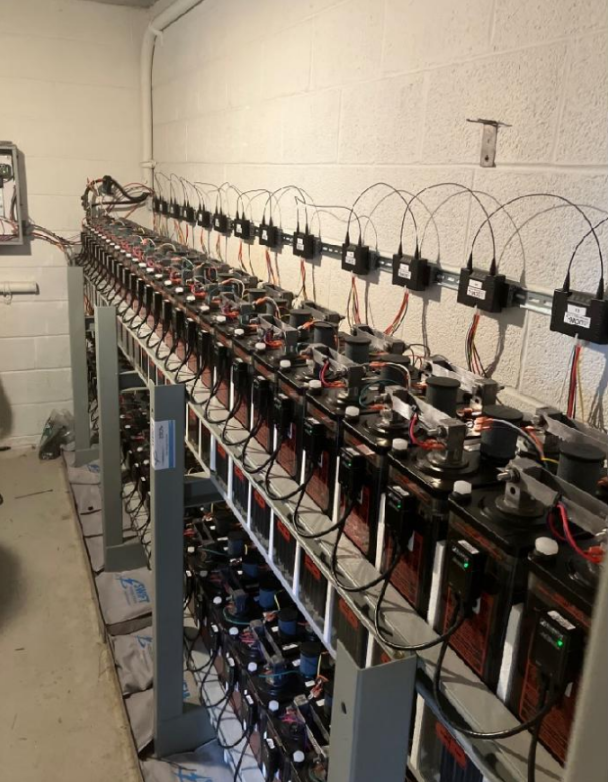How to Choose the Best Battery Monitoring System for Your Needs
In today’s technology-driven world, batteries play a critical role in powering everything from small devices to large industrial systems. Whether you’re managing a data center, an off-grid solar system, or a protecting critical equipment in a substation, keeping your batteries in optimal condition is essential. A battery monitoring system (BMS) is key to ensuring that your batteries perform efficiently and have a long lifespan. But with so many options available, how do you choose the best BMS for your needs? This guide will walk you through the key factors to consider when selecting a battery monitoring system.
1. Understand Your Battery System
Before you can choose the right battery monitoring system, you need to have a clear understanding of your battery setup. Consider the following:
- Battery Type: Different battery types (lead-acid (both Vented Lead Acid and Valve Regulated Lead Acid), lithium-ion, nickel-cadmium, etc.) have different monitoring needs. Ensure that the BMS you choose is compatible with your battery type.
- System Voltage: Battery monitoring systems are designed to work within specific voltage ranges. Knowing your system’s voltage is crucial for selecting a compatible BMS.
- Application: Consider the environment in which your batteries operate. Are they in a clean, temperature controlled setup like a Telecom Central Office? Or a little more rugged operation like a substation for an electric utility. The BMS you choose should be tailored to the specific demands of your application.
Understanding these basic aspects of your battery system will help you narrow down the options and choose a BMS that meets your requirements.
2. Key Features to Look For
A battery monitoring system should provide real-time data and insights into the health and performance of your batteries. Here are some key features to consider:
- Voltage and Temperature Monitoring: Accurate monitoring of voltage and temperature helps prevent conditions that could damage the battery or reduce its efficiency.
- Internal and Intercell Resistance Monitoring: Monitoring the month to month changes in resistance readings can help identify potential problems before they get out of hand. There could be need for cleaning and maintenance on connections, or possibly a deeper dive into an issue with a battery by performance a Capacity Test
- Data Logging and Reporting: Look for a BMS that can log data over time and generate reports. This is particularly useful for analyzing trends and making informed decisions about battery maintenance and replacement.
- Alerts and Notifications: A good BMS should offer customizable alerts for issues like low voltage, high temperature, or abnormal resistance readings, allowing you to take action before problems escalate.
These features help ensure that you’re always aware of the condition of your batteries and can take steps to optimize their performance and longevity.
3. Scalability and Flexibility
As your power needs change, your battery system may change with it. Choosing a BMS that can scale with your system is crucial for long-term success. Consider the following:
- Modular Design: A BMS with a modular design allows you to add or remove components as needed, making it easier to scale your system without having to replace the entire monitoring setup.
- Compatibility with Multiple Battery Types: If you’re managing different types of batteries or planning to upgrade in the future, look for a BMS that supports multiple battery chemistries.
- Integration with Other Systems: Ensure that the BMS can integrate with other systems you’re using, such as solar inverters, energy management systems, or data analytics platforms. This can enhance the overall efficiency of your power management setup.
A scalable and flexible BMS can save you time and money in the long run by allowing you to adapt to changing power needs without major disruptions.
4. User Interface and Ease of Use
The effectiveness of a battery monitoring system is closely tied to its user interface and ease of use. Even the most feature-rich BMS can be difficult to manage if the interface is complicated or unintuitive. When evaluating options:
- Dashboard Customization: Look for a BMS that allows you to customize the dashboard so you can focus on the data that matters most to you.
- Remote Monitoring Capabilities: Remote access is increasingly important, especially if you’re managing batteries across multiple sites. A BMS with mobile app support or cloud-based access allows you to monitor your system from anywhere.
- User Training and Support: Consider the level of training and support provided by the BMS manufacturer. A system that comes with comprehensive training resources and responsive customer support can make a big difference in day-to-day operations.
Choosing a BMS with a user-friendly interface ensures that your team can easily monitor and manage the system, leading to better outcomes and fewer headaches.
5. Budget Considerations
Cost is always a factor when choosing a battery monitoring system, but it’s important to balance initial cost with long-term value. Consider the following:
- Total Cost of Ownership (TCO): While a cheaper BMS might seem attractive, it’s important to consider the long-term costs, including maintenance, upgrades, and potential downtime due to system failures. A more robust and reliable system may have a higher upfront cost but save you money over time.
- Return on Investment (ROI): Evaluate how the BMS will impact your operations. A good BMS can provide data that will help you extend the life of your batteries, reduce downtime, and prevent costly repairs, providing a strong ROI over time.
- Warranty and Support: Check the warranty and support options provided by the manufacturer. A comprehensive warranty can provide peace of mind, while good support ensures that any issues are quickly resolved.
By considering both the upfront cost and the long-term value, you can choose a BMS that fits within your budget while still meeting your needs.
Conclusion
Choosing the best battery monitoring system for your needs involves understanding your battery setup, evaluating key features, and considering factors like scalability, ease of use, and budget. By taking the time to assess these elements, you can select a BMS that helps you maintain optimal battery performance, extend battery life, and ultimately save on costs. A well-chosen BMS is an investment in the longevity and efficiency of your power management system.
Swift Industrial Power offers varying battery monitoring system solutions to meet our customers different needs. Check out our product information page and consult with your local sales representative for the best fit for your site.

